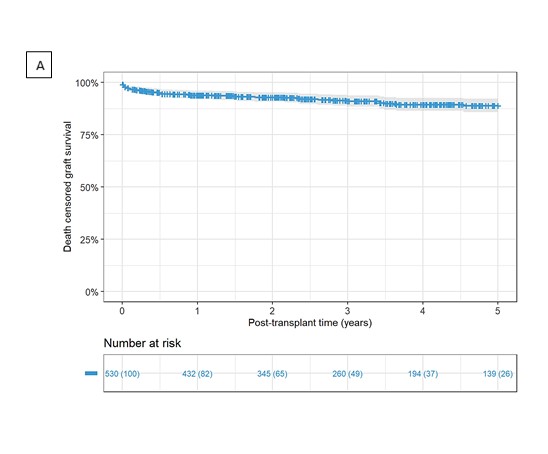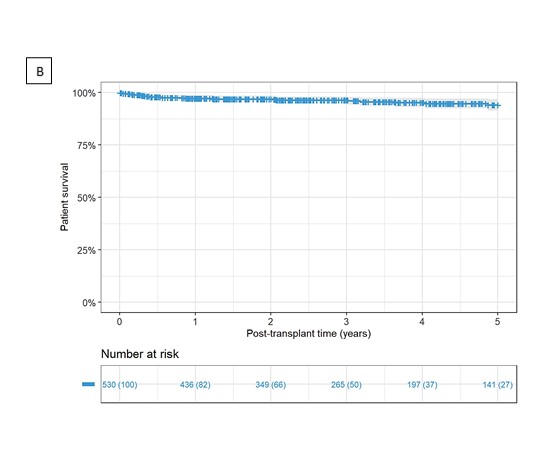Main clinical outcomes in living-donor kidney transplantation: a Latin-American cohort
Yenny Baez Suarez1, Andrea Garcia Lopez1, Nasly Patiño Jaramillo1, Fernando Giron Luque1.
1Bogota D.C, Colombiana de Trasplantes, Bogota, Colombia
Background: Living donor kidney transplant (LDKT) is one of the best therapeutic options for end-stage kidney disease (ESKD). The graft and patient survival rates are significantly higher in living-donor kidney transplantation (LDKT) compared to deceased-donor kidney transplantation. However, there is a lack of information in Latin-American populations. Colombiana de Trasplantes has been one of the centers in Colombia that have performed a high proportion of kidney transplantation from living donors. Therefore, we aimed to evaluate main clinical outcomes, graft, and patient survival for LDKT at our center.
Methods: We retrospectively evaluated a total of 530 LDKT patients who underwent transplantation form august 2008 to august 2020 at Colombiana de Trasplantes. Graft survival censored for death and patient survival were determined up to 5 years post transplantation by the Kaplan-Meier method. Frequency of thrombosis, hematoma, urinary leak, and reoperation were documented.
Results: A total of 530 LDKT patients were analyzed. Most patients were male (56%). The predominant known chronic kidney disease etiology was glomerular (n = 163, 30.8%). There were 123 (23.2%) LDKT patients with a preemptive transplant. Dialysis duration was 22.1 ± 33.5 months. Most kidney recipients had a medical history of hypertension (n = 405, 76.4%). Besides, 43 LDKT patients were obese (8.1%). Most of the live kidney donors (LKD) were female (n = 279, 52.6%), and relatives for the recipient (n = 366, 69.1%). Main clinical outcomes were mortality (n = 22, 4.1%) and graft loss (n = 46, 8.6%). The graft survival death-censored rates were 93.7% and 89% at 1 and 5 years respectively. Patient survival rates were 97.0% and 94.1% at 1 and 5 years respectively. During the follow-up period, a total of 13 patients had vascular complications (2.4%), 18 had peri transplant hematoma (3.4%), 48 had urinary leak (9.1%), and 98 required reoperations (18.5%).
Figure 1. Graft and patient survival in LDKT patients at the follow-up period


Conclusion: This study describes the experience of 5 years performing LKDT. Long-term graft and patient survival rates in our center are comparable to prior reports from other leading centers. Since there have been many updates in the field of transplantation, clinical outcomes from a medium-sized center can be noteworthy, although not entirely new.

right-click to download
